- Cart 0
- English
WB incurable disease - membrane protein
What are membrane proteins?
Membrane proteins are an important part of the cell membrane and are responsible for many key biological functions such as material transport, signal transduction, and cell-to-cell recognition, and the membrane proteins encoded in the human genome account for about 25% of the total proteome. They can be divided into different categories based on how they bind to the membrane and their functional characteristics. Here are some of the main types and functions of membrane proteins:
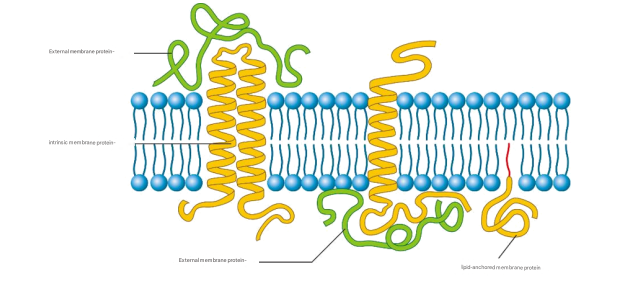
1. Classification of membrane proteins
Outer membrane proteins: These proteins are distributed on the inner and outer surfaces of the cell membrane, accounting for about 20%-30% of the membrane proteins, mainly on the inner surface. They bind to the polar head of membrane lipid molecules through ionic bonds, hydrogen bonds, or indirectly to membranes through interactions with intrinsic proteins, and are mostly hydrophilic proteins, the main types are enzymes, receptor proteins, cytoskeleton-associated proteins, immune-related proteins, intercellular connexins, etc.
Inner membrane proteins: These proteins account for about 70%~80% of membrane proteins, and are amphiphilic medium molecules, which can be embedded in lipid bilayer molecules to varying degrees. Some run through the entire lipid bilayer and expose both ends to the inner and outer surfaces of the membrane, and this type of membrane protein is also known as transmembrane proteins, including transmembrane ion channel proteins, G protein-coupled receptors (GPCRs), transmembrane transporters, transmembrane receptor tyrosine kinases (RTKs), etc.
Lipid-anchored membrane proteins: These proteins are anchored to the cytoplasmic membrane by inserting a lipid bimolecule of the membrane through a lipid molecule covalently attached to it.
2. What is the significance of studying membrane proteins?
Disease treatment: Membrane proteins play a vital role in many physiological processes, including cell signaling, material transport, and cell recognition. Many diseases, such as cystic fibrosis, diabetes, cardiovascular disease, and neurodegenerative diseases, are associated with abnormal function of membrane proteins. Studying membrane proteins can help understand the pathogenesis of these diseases and provide targets for the development of new therapeutics.
Drug development: Approximately 60% of drugs act on membrane proteins, such as G protein-coupled receptors (GPCRs), ion channels, and transporters. By studying the structure and function of these membrane proteins, scientists can design more effective drugs to modulate their activity and thus treat related diseases.
Biomedical research: Membrane proteins play a key role in cell-to-cell communication, cell response to external signals, and cellular immune function. These studies contribute to our understanding of how cells sense and adapt to environmental changes, and how biological processes are regulated at the cellular level.
Understanding of biofilm structure: The structure and dynamic nature of cell membranes are essential for the survival of cells. Studying how membrane proteins interact with membrane lipids can help us better understand the physical properties and biophysics of biofilms.
Biotechnological applications: The study of membrane proteins can contribute to the development of biotechnology, for example in areas such as biosensors, drug screening, and nanotechnology. Understanding the properties of membrane proteins can help design more effective biotech tools.
Basic research in cell biology: Membrane proteins are the main components of cell membranes, and studying them helps us understand fundamental cellular processes such as cell membrane biosynthesis, maintenance, and repair.
Agriculture and animal husbandry: In agriculture and animal husbandry, the study of membrane proteins can help improve the traits of crops and livestock, such as by genetically engineering plants to improve their resistance to disease or improve their nutritional value.
Environmental science: In the field of environmental science, the study of membrane proteins contributes to the understanding of how microorganisms interact with the environment, for example during bioremediation and the metabolism of pollutants.
3. How do I know if the protein I am studying is a membrane protein?
Subcellular localization prediction can be performed through Uniprot, and the method is very simple, you only need to enter the protein name, select the corresponding species, and enter the details page.
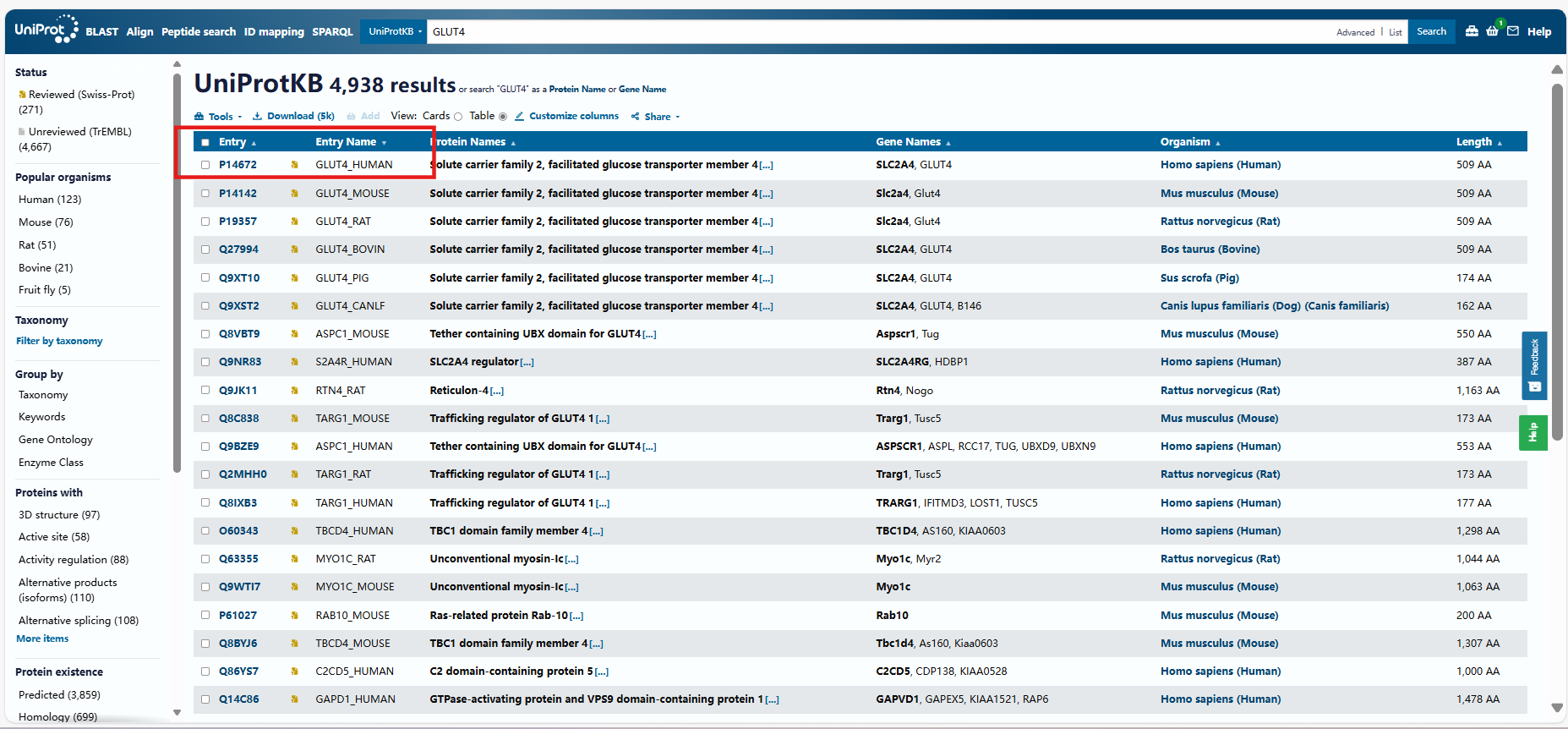
Select subcellular localization to understand the distribution of the protein in the cell.
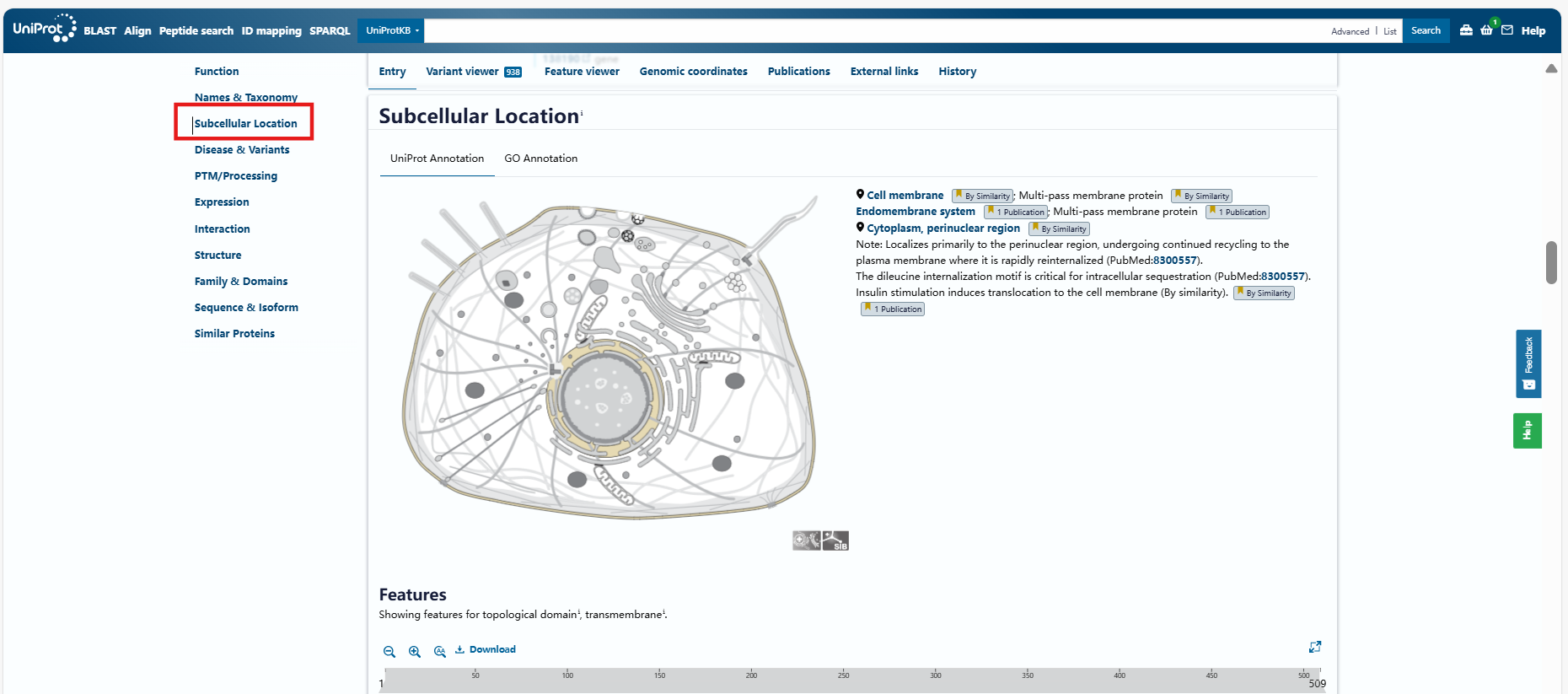
Of course, mutual verification can also be carried out through tools such as YLoc and Cell-PLoc.
4. What is the difficulty of membrane protein WB?
Many membrane proteins are large molecular weight proteins, which are more difficult to extract and transfer than small molecular weight proteins.
Difficult extraction: membrane proteins are tightly bound to the membrane and are not easy to wash off the membrane, especially transmembrane proteins, which have:
1) Complex structure: Transmembrane proteins have multiple transmembrane domains, which are tightly embedded in the cell membrane through hydrophobic interaction, which makes them very low in water solubility and not easy to be extracted.
2) Low expression: The expression level of membrane proteins in the sample is usually not high, and if it is not enriched, it accounts for a low proportion of total protein, and may not be detectable when detected with total protein.
3) Easy to form multimers: Due to the hydrophobicity of membrane proteins across the membrane region, the hydrophobic interaction may be enhanced when heated, resulting in the aggregation of membrane protein molecules to form polymers.
4) Large molecular weight: Some membrane proteins have large molecular weight, and conditions such as large molecular weight protein WB, electrophoresis, and membrane transfer need to be explored, which is more difficult.
What should we do with membrane proteins?
1. Understand the characteristics of the protein you are studying
Through uniprot, topcons, The Human Protein Atlas and other tools, combined with literature search, to understand the expression of the research protein in tissues and various cells, whether it belongs to the transmembrane protein, etc., the expression level is high and does not belong to the transmembrane protein, the protein is relatively easy to extract, and the total protein can be extracted, for the transmembrane protein or the protein with relatively little expression and difficult to extract, the membrane protein enrichment can be carried out first ( abs9346-50T)。
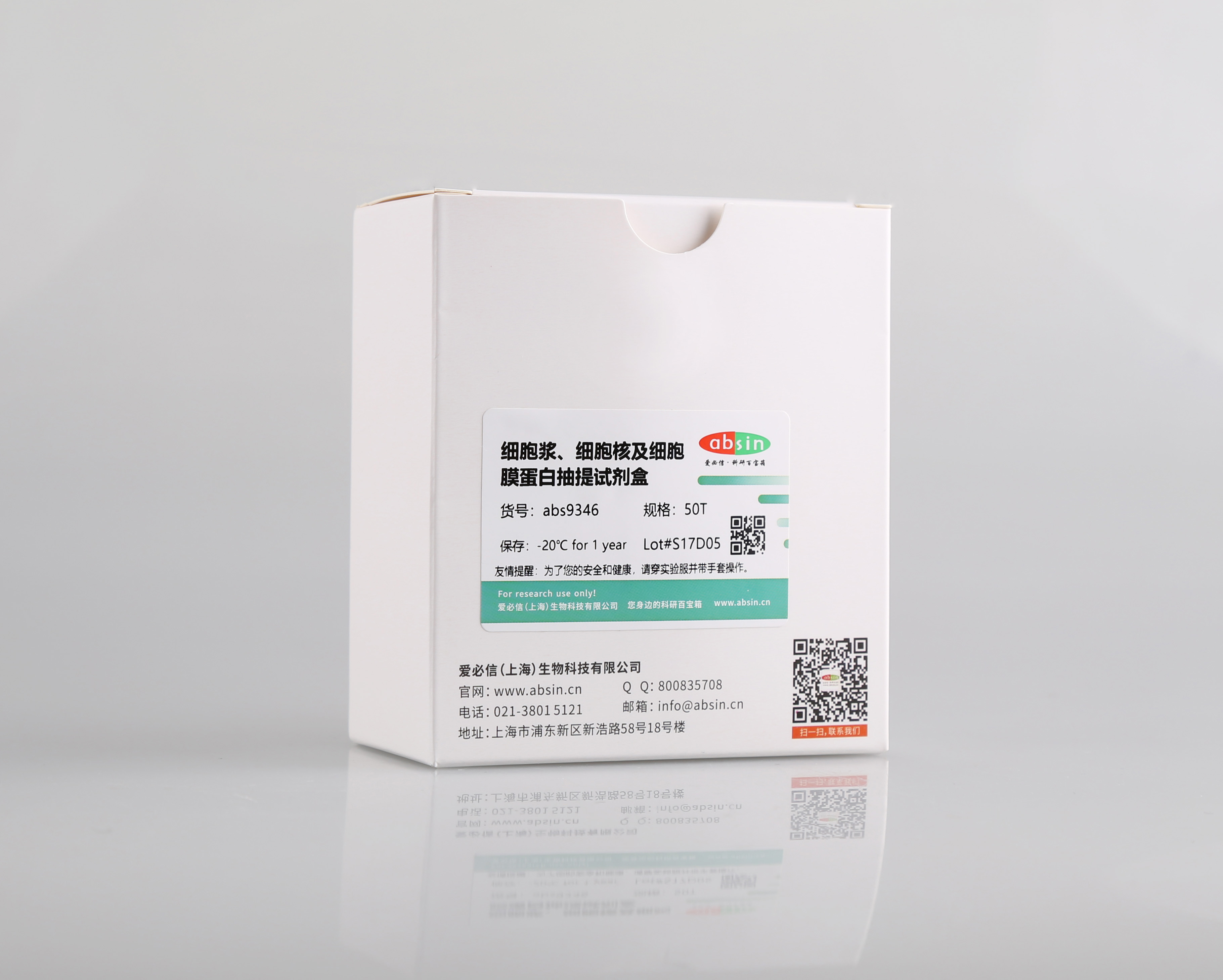
abs9346-50T Cytoplasmic, nucleus, and membrane protein extraction kit
2. Protein denaturation
In order to avoid the thermal denaturation of membrane proteins affected by temperature and the formation of polymers and affect the experimental results, it is recommended to perform thermal denaturation at about 50-70°C or 37°C according to the specific properties of the protein.
3. Electrophoresis
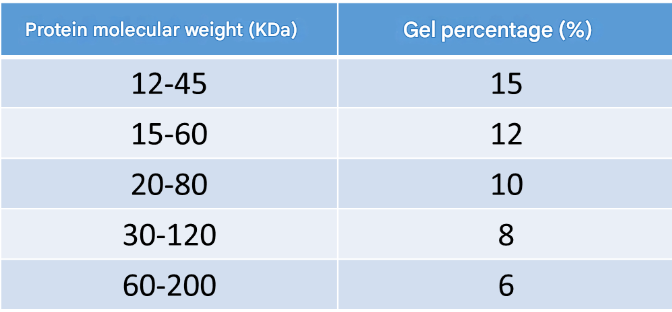
Selection of separating glue
According to the molecular weight of the protein to choose the gel concentration, you need to separate a variety of proteins with a large molecular weight span at the same time, you can also choose gradient gel, macromolecular protein is best to use Tris-Acetate system for electrophoresis, absin's Tris-Acetate precast gel can effectively separate 40-500kDa large protein molecules, the use of glass glue plate, effectively reduce the non-specific adsorption of protein, make the protein band sharper, clearer. For electrophoresis, a high voltage of 120-150V can be used in an ice water bath to try to make the marker far enough away, usually about 4 hours.
4. Transfer the film
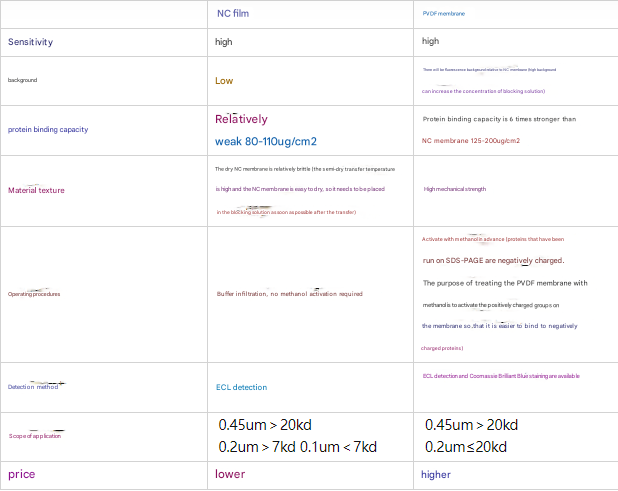
Selection of transfer membrane
The wet transfer method takes a long time to transfer the film, under the condition of 300mA current, it takes 3-3.5h for 150-180KDa protein, 4-5h for 180-250KDa, and 5.5-6h for more than 250KDa. Semi-dry rotation, 40V constant pressure, 60-90min transfer, proteins less than 400KDa can generally be transferred to PVDF membrane. Constant current rotation, the current size is set to the area of PVDF film, the time is about 1 hour, and the semi-dry rotation saves time.
Other questions can be adjusted according to actual experiments.
Recommended products
|
Catalog number |
Product name |
specification |
|
Cytoplasmic, nucleus, and membrane protein extraction kits |
50T |
|
|
Glass gel Tris-Acetate |
10 tablets/box |
|
|
Tris-Acetate-SDS Running Buffer (Powder) |
1 pack |
|
|
Large Protein Loading Buffer (4×) |
1mL×5 |
Absin provides antibodies, proteins, ELISA kits, cell culture, detection kits, and other research reagents. If you have any product needs, please contact us.
|
Absin Bioscience Inc. Email: worldwide@absin.net |
 Follow us on Facebook: Absin Bio Follow us on Facebook: Absin Bio |
July 14, 2025
Clicks:89
